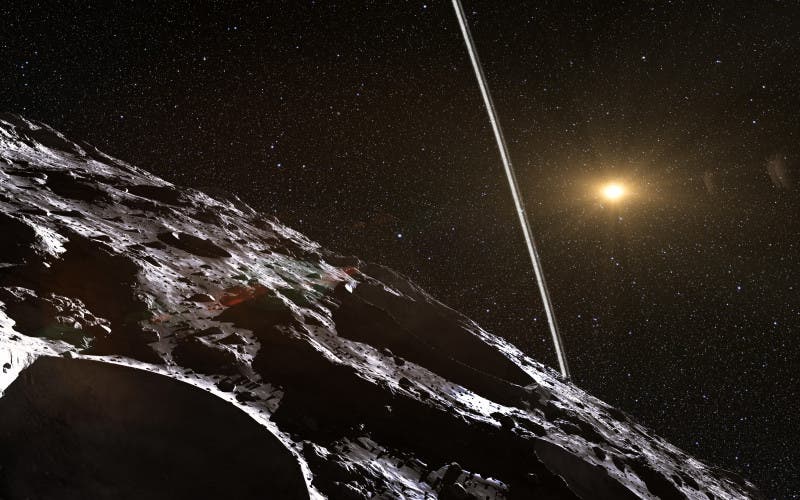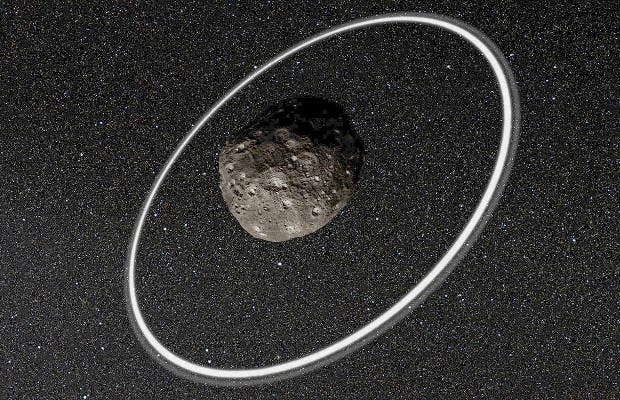An international team of researchers has finally clarified the origin of and processes which form planetary rings around two minor planets known as centaurs. Their findings suggest that there’s a strong possibility we’ll see such rings around future centaurs.

Image credits ESO/L. Calçada/Nick Risinger.
Centaurs are small celestial bodies that orbit between Jupiter and Neptune. Their current or past orbits repeatedly cross with those of gas giants, and sometimes pass very close by the planets themselves. Because they share characteristics of both comets and asteroids, they’re named after the mythological centaurs of old, creatures with a dual nature — the upper body of a human and the lower body of a horse.
In 2014, scientists studying the occultation effect of these centaurs were surprised to discover ring systems around Chariklo, the largest centaur we know of with (approximately 250-kilometre radius). Chiron, a slightly smaller centaur with a 220-kilometre-radius, is also suspected to have a similar ring system. Their origin and formation remained shrouded in mystery, though, as we’ve only seen rings around huge gas giants such as Saturn or Jupiter before and thought massive gravitational forces are needed to generate the material that forms such rings.
Now, an international team of astrophysicists thinks they’ve discovered how the small centaurs got their rings. The team began by estimating the probability that the bodies passed close enough to a gas giant to be ripped apart by their tidal pull — the results showed that roughly 10% of centaurs would go through such an encounter.
They then used computer simulations to model the effect gravitational forces would have on the centaurs as they passed close to a gas giant. The results would vary considerably based on several factors, such as the centaur’s initial spin, it’s core size, and the distance of approach to the planet.
But if the conditions were just right — if the centaur is differentiated (its center and mantle are made of different materials), specifically if it has a silicate core covered with ice, bits and pieces of it will often spread out in a disc shape around the largest remnant piece. Over time, this would stabilize into a planetary disk.

Image credits Astronomy Now.
The team’s results show that rings form around centaurs much more readily than we believed. So it’s highly likely we’ll see more ringed centaurs or small moons once we go out there.
Which is fortunate, because they seem very pretty.
The full paper “Formation of the Centaurs’ Rings through their Partial Tidal Disruption during Planetary Encounters” has been published in The Astrophysical Journal.
Was this helpful?



